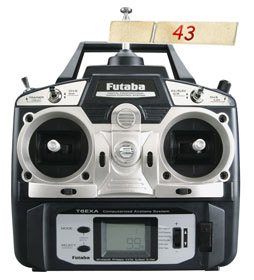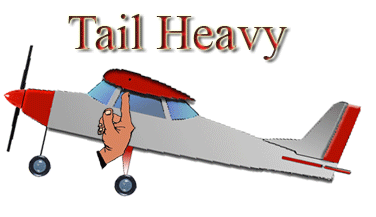Pre-Flight Check List for RC Airplanes
Pre-Flight checks are just as important for RC airplanes as they are for full scale airplanes. There are a zillion things that could go wrong during a flight.
It is critical that you check everything humanly possible to minimize the risk of crashing your airplane. This page contains a list of the most common pre-flight checks. If you follow these checks closely before each flight, you should be in good shape.
But just remember, anything could go wrong... The key is to expect the unexpected!
Frequency Check
|
If you're flying at a club and have a 72 MHz radio system, you need to make sure that your frequency is free before turning on your radio! Follow your club's pre-flight instructions for obtaining the frequency pin. I listed this check first because it is by far the most important in my opinion. |
 |
Radio Range Check
A range check is a very important pre-flight check that should be done before the first flight of each day at the flying field. Follow the procedure in your radios manual for doing a range check.
Some radios require a slightly different procedure than others but all are similar to the following.
It's helpful if someone holds the transmitter for you. Turn on the transmitter, then the receiver. If using 72Mhz leave the antenna fully collapsed. If using 2.4Ghz make sure the radio is in range check mode.
While holding the airplane, slowly walk away from the transmitter until the servos begin to twitch violently. With a PCM radio, the servos will stop moving all together.
If this distance is farther than 100 ft then you are good to go! If it is less than 100ft do NOT fly! You must determine what the problem is and correct it before flying.
Double Check the Balance

Your should always balance your RC airplane before coming to the flying field.
However, it is always a good idea to check the forward/backward balance one more time before the first flight of each day.
Remember that the fuel tank must be empty when checking the balance.
Check the Bolts for Tightness
The engine vibrations during flight sometimes cause bolts to vibrate loose.
- Make sure the bolts holding the wing to the fuselage are in place and are tight.
- Make sure all engine/motor mounting bolts are tight.
- Also make sure the propeller nut is tight
Check Control Surfaces
With your radio system on, make sure the control surfaces are moving correctly with each stick movement of the transmitter. Make sure all control surfaces are secured firmly. Sometimes CA hinges can work themselves loose.
Make sure all snap links are closed on the control horn clevises. You may also want to cut a small piece of fuel tubing to stretch over the snap link to keep it from coming apart in flight.
Make sure all the servo horns and firmly attached to the control surfaces. Make sure the screw holding the servo horns to the servos are in place and tight.
Battery Voltage Check
|
Make sure the voltage of the transmitter and receiver batteries are acceptable levels before flying. Follow the recommendations in the radio manual for minimum charge requirements. Failure to perform this pre-flight check before every flight could result in a pile of twisted balsa wood! |
Check Engine

Be sure the engine is properly tuned before taking off. It's a good idea to hold your airplane vertically with the nose upward while running your engine at full throttle to make sure it will run when in this position while in the air.
Also make sure you hear the fuel clunk moving freely when shaking the airplane. Some times during a rough landing the fuel clunk can get flung towards the front of the tank and get stuck. This is sure to cause a dead stick landing.
Antenna Extended
Using a 72Mhz radio? Always double check to make sure your antenna is fully extended! It may sound silly, but believe it or not people actually forget to extend their antennas. Yep, I've even done it myself more than once!
Other pages that may interest you...
- Choosing Your First RC Airplane
- How to fly RC Airplanes the Smart Way
- First Flight Walkthrough
- RC Airplane Controls
- RC Trainer Traits
- Flight Simulators
- Model Airplane Accessories
Home > How to Fly RC Airplanes/span> > Pre-Flight Checks
Let’s Go Flying! |
|
5 Steps for Successful First Flight! When the RC bug bites, it bites hard! Control yourself my friend! Save yourself much time and money by following these five steps to success! |




